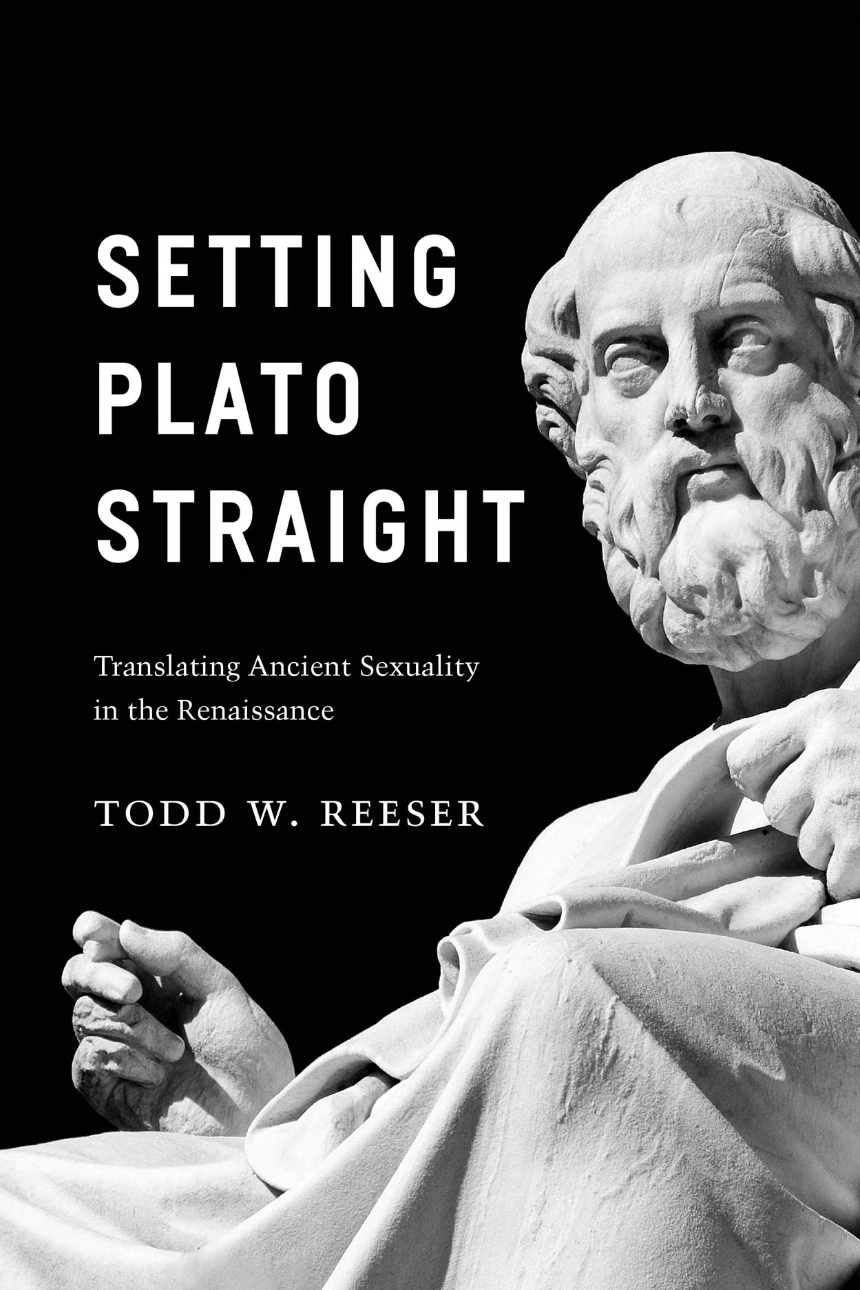Setting Plato Straight
Translating Ancient Sexuality in the Renaissance
When we talk of platonic love or relationships today, we mean something very different from what Plato meant. For this, we have fifteenth and sixteenth-century European humanists to thank. As these scholars—most of them Catholic—read, digested, and translated Plato, they found themselves faced with a fundamental problem: how to be faithful to the text yet not propagate pederasty or homosexuality.
In Setting Plato Straight, Todd W. Reeser undertakes the first sustained and comprehensive study of Renaissance textual responses to Platonic same-sex sexuality. Reeser mines an expansive collection of translations, commentaries, and literary sources to study how Renaissance translators transformed ancient eros into non-erotic, non-homosexual relations. He analyzes the interpretive lenses translators employed and the ways in which they read and reread Plato’s texts. In spite of this cleansing, Reeser finds surviving traces of Platonic same-sex sexuality that imply a complicated, recurring process of course-correction—of setting Plato straight.
In Setting Plato Straight, Todd W. Reeser undertakes the first sustained and comprehensive study of Renaissance textual responses to Platonic same-sex sexuality. Reeser mines an expansive collection of translations, commentaries, and literary sources to study how Renaissance translators transformed ancient eros into non-erotic, non-homosexual relations. He analyzes the interpretive lenses translators employed and the ways in which they read and reread Plato’s texts. In spite of this cleansing, Reeser finds surviving traces of Platonic same-sex sexuality that imply a complicated, recurring process of course-correction—of setting Plato straight.
416 pages | 3 halftones | 6 x 9 | © 2015
History: European History
Literature and Literary Criticism: Germanic Languages, Romance Languages
Reviews
Table of Contents
Preface: Strictly Platonic
Note on Translations Used
Introduction
1: Solving the Problem with Plato
2: The Antitheses of Same-Sex Sexuality in Bruni
3: Ficino and the Theory of Purging Same-Sex Sexuality
4: Ficino and the Practice of Purging Same-Sex Sexuality
5: Importing Ficino: Gender Balance in Champier
6: Seducing Socrates: The Silenus in Erasmus and Rabelais
7: The Gates of Germania: Space, Place, and Sexuality in Cornarius
8: Fractured Men: Feminism and Neoplatonism in Mid-Sixteenth-Century France
9: Orientations: Female-Female and Male-Male Eros in Dialogue
10: Reading Sexuality Skeptically in Montaigne
Conclusion: Bending Plato
Appendix: Major Translations of Plato’s Erotic Dialogues
Acknowledgments
Notes
Index
Note on Translations Used
Introduction
1: Solving the Problem with Plato
2: The Antitheses of Same-Sex Sexuality in Bruni
3: Ficino and the Theory of Purging Same-Sex Sexuality
4: Ficino and the Practice of Purging Same-Sex Sexuality
5: Importing Ficino: Gender Balance in Champier
6: Seducing Socrates: The Silenus in Erasmus and Rabelais
7: The Gates of Germania: Space, Place, and Sexuality in Cornarius
8: Fractured Men: Feminism and Neoplatonism in Mid-Sixteenth-Century France
9: Orientations: Female-Female and Male-Male Eros in Dialogue
10: Reading Sexuality Skeptically in Montaigne
Conclusion: Bending Plato
Appendix: Major Translations of Plato’s Erotic Dialogues
Acknowledgments
Notes
Index
Awards
Choice Magazine: CHOICE Outstanding Academic Title Awards
Won
Renaissance Society of America: Phyllis Goodhart Gordan Book Prize
Won
